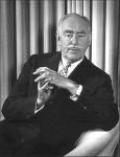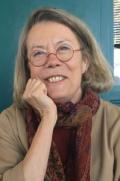Hernando de Soto marched across what is now eleven U.S. states, leaving a trail of destruction and disease.
Editor’s Note: One of the most respected historians of the Civil War and Indian conflicts, Peter Cozzens has written 17 books, including The Earth is Weeping: The Epic Story of the Indian Wars of the American West, which won the Gilder Lehrman Prize for Military Hist
A sad footnote to the horrific shootings in Florida is the soiling of the name of the environmental pioneer for whom the Parkland high school was named.
In Florida during the 1830s a young Indian warrior led a bold and bloody campaign against the government's plan to relocate his people west of the Mississippi River
Born Billy Powel in
Spain’s attack on Fort Caroline and brutal slaughter of its inhabitants ended France’s colonial interests on the East Coast
In June 1564, 300 French colonists arrived at the mouth of the St. Johns River near present-day Jacksonville, Florida, after an arduous voyage across the Atlantic.
As a Rough Rider in the Spanish-American War, Theodore Roosevelt’s attention to nature and love of animals were much in evidence, characteristics that would later help form his strong conservationist platform as president
ON JUNE 3, 1898, 39 days into the Spanish-American War, Theodore Roosevelt and his Rough Riders arrived in Florida by train, assigned to the U.S. transport Yucatan. But the departure date from Tampa Bay for Cuba kept changing.
A hurricane sank a fleet in Pensacola Bay 450 years ago, dooming the first major European attempt to colonize North America, a story that archaeologists are just now fleshing out
On August 15, 1559, the bay now known as Pensacola slowly filled with a curious fleet of 11 Spanish vessels, their decks crammed with an odd mix of colonists and holds filled to bursting with supplies and ceramic jars of olive oil and wine from Cadiz. Aboard the 570-ton flagship Jesus stood the wealthy and ambitious Don Tristan de Luna y Arellano, with direct orders from the king of Spain to establish a permanent colony in La Florida. The rest of the fleet included two galleons, beamy cargo ships known as naos , small barques, and a caravel.
North America had never before seen anything like it on this scale.
Wildlife, Shells, and Thomas Edison’s Laboratory
The best family vacations combine mind-improving visits to museums and historic houses with enough recreation to keep the kids happy; the older and moodier your children grow, the more carefully you choose and apportion your ingredients.
Last April my husband, Kevin, and I took our two teenage boys to Lee County, Florida. A visit to the Edison & Ford Winter Estates would be the educational uplift, relaxing on Sanibel Island the reward.
A true story of their final days on the Florida seashore, when a water cannon destroyed a suspicious package later found to contain miniature portraits by the celebrated American painter Gilbert Stuart
A soldier’s timeless meditation on the frustrations of military life
Sexy and melancholy, festive and forlorn, the island has always heated the Yankee imagination. The author visits there in the late afternoon of a straitened era and looks back on four centuries of passionate misunderstandings.
In those days, back in the thirties, the forties, the fifties of this century, Cuba was Havana, and Havana was a dream.
The first American to leave the Earth's atmosphere recalls the momentous flight that put us on a course for the moon.
THE SHRILL RINGING WOKE ME from deep sleep early in the morning of April 12, 1961. I was confused for a moment, but only a moment. I was in my room in the Holiday Inn at Cocoa Beach, Florida.
The shady courtyards, tiled roofs, and white stucco walls of 1920s Palm Beach owed something to the style of the Spanish Renaissance and everything to the vision of Addison Mizner
As the evangelist of the Spanish Colonial Revival in southern Florida, Addison Mizner was an architect of fantasy as well as of houses.
The Florida Speed Carnivals at Daytona lasted less than a decade, but they saw American motoring grow from rich man’s sport to national obsession
It has been said that motor sport was the first organized activity in America that drew all social classes together. Certainly William K. Vanderbilt, Jr., and Barney Oldfield would have been unlikely to have exchanged pleasantries otherwise.
All this Florida boy wanted to do was rejoin his regiment. Instead they drafted him into the Confederate secret service.
A FTER HE WAS MUSTERED out of his beaten army in 1865, Charles Hemming went west to Texas and a highly successful career as a banker.
With Epcot, Walt Disney turned his formidable skills to building a city where man and technology could live together in perfect harmony. The result is part prophecy, part world’s fair. Here, America’s leading authority on technological history examines this urban experiment in the light of past world’s fairs, and tells why it fails where they succeeded—and why that matters.
MOST OF THE world must know by now that Epcot is a place built in north-central Florida by the followers of Walt Disney to explain how science and technology fit into the human scheme of things.
A Childhood in the Florida Wilderness
In 1899 when I was five years old and living in Palmetto, Florida, my father decided to take his family through the wilds of the Everglades and stake a claim on an offshore island.
On a warm Florida evening in 1933 a madman with a pistol and a personality profile now all too familiar—“unskilled, unfriendly, unmoneyed, and unwell”—came within inches of altering the course of American history in one of its most critical moments
The sun had gone down on a warm Florida winter day (it was seven in the evening of February 15, 1933) when Vincent Astor’s Nourmahal tied up at a Miami dock after twelve days of cruising through the Bahamas.
The Plains Acrossi The Overland Emigrants and the Trans-Mississippi West, 1840-60
by John D. Unruh, Jr. University of Illinois Press Illustrations, tables, maps 565 pages, $20.00
Branded a traitor by the government he once served, John C. Breckinridge ran a perilous race for freedom rather than risk capture by the North
The weather in the Straits of Florida was turbulent in June of 1865. Throughout that spring the Caribbean boiled from one storm after another, but this latest one was particularly severe.
Key West, southernmost city in the mainland United States proper, was also in 1880 the largest and most prosperous city in Florida; by 1930, in dizzying contrast, it had become one of the most depressed areas in the United States.
"We have permanently safeguarded an irreplaceable primitive area," said President Truman as he dedicated Everglades National Park in 1947. Bit what is permanence, and what is "safeguarded"? Did he speak too soon?
Even before there was an Everglades National Park, there was Clewiston.
In Florida the great conquistador hoped to find a Golconda. Instead, he found a Golgotha.
Before the days of the explorers, the Mississippi was an Indian river. Spreading in a vast belt from the Great Lakes to the Gulf of Mexico was a multitude of tribes—Fox, Potawatomi, Kickapoo, Iowa, Illinois, Winnebago, Miami, Masouten, Chickasaw, Oto, Quapaw, and others.





